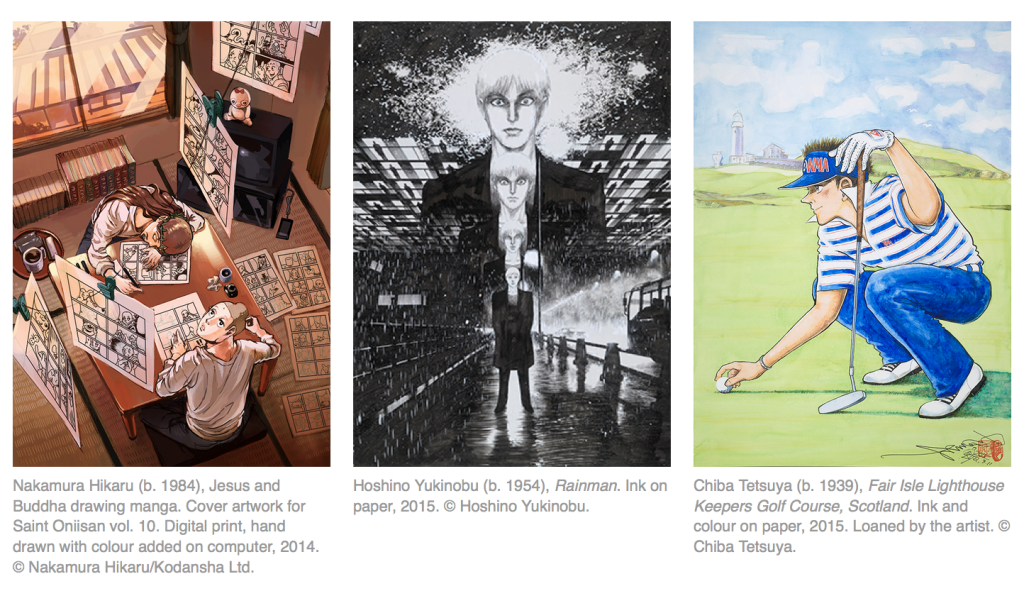Manga is a popular choice for museum exhibitions and displays: with boundless variations in content and style, it’s accessible but (still) culturally exotic; it mixes scholarly research with contemporary collecting; and whether PG-rated or not, attracts a diverse audience of geeks and gawkers of all ages. Not for the first time, the British Museum gives over the high profile Room 3 (can’t miss it, first stop on the right) to a manga-moment with Manga now: three generations, which features new and specially commissioned work by Chiba Tetsuya, Hoshino Yukinobu and Nakamura Hikaru. I’ll pop in to inspect it next time I’m on the hallowed ground.
Manga now, three generations
The Asahi Shimbun Displays, Objects in Focus
British Museum
Great Russell Street, London WC1
www.britishmuseum.org
3 September to 15 November 2015
Previously the same gallery featured the stunning display, Manga, Professor Munakata’s British Museum adventure (5/11/09-3/1/10), by Hoshino Yukinobu. Jane Cheng reviewed that show on Eye, here: “The juxtaposition of hugely enlarged with minutely detailed asks visitors both to lean in closer and to step back”. Jane’s post features great images of the life-sized cut-outs in situ – like walking through a giant pop-up book — and she highlights the interactive nature of illustration exhibitions (something I recognised too at the V&A’s Memory Palace show, and featured in a conference paper, here). Loving a museum-based-mystery, especially one that showcases perfectly rendered images of museum objects (and hat’s off, what a tie-in, when’s the movie?), I ordered said graphic novel from the BM’s online shop having received a timely email reminding me of the publication on the same morning that the new show opened; now that’s what I call museum marketing. The online shop also tells customers, “Every purchase supports the Museum” (rather than Amazon).
Continue reading


